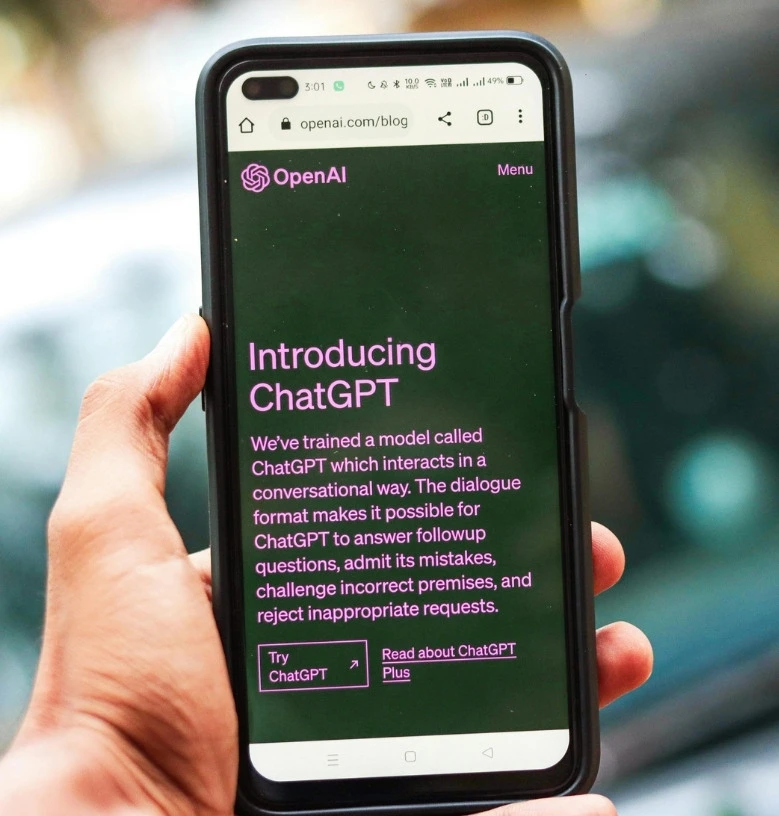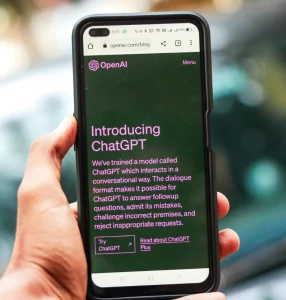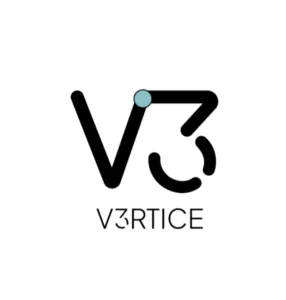Generative Artificial Intelligence is transforming brands and the way they communicate and connect with audiences. With the automation and personalization of content, image creation, videos and new interactive experiences, companies are going one step ahead of traditional limits in marketing and creativity.
At V3rtice we maintain originality and style with the experience of our profiles. The importance of persevering with the magic of creating concepts and products entirely made by our team represents us.
Generative Artificial Intelligence is a topic that we should not let go unnoticed and that is why we have created the following guide, where we will explore how brands are using AI to:
- Increase speed in creative processes and reduce costs.
- Create a high-impact personalized user experience.
- Improve customer service response times.
- Create innovative designs and optimal advertising.
- Design products and services quickly and intelligently.
What is Generative AI and how does it work?
Generative AI is a branch of Artificial Intelligence that is characterized by creating new and original content from existing data. Compared to other AI systems, it creates images, audio, video, codes or any other digital content similar to the creation of a human.
It is based on machine learning, specifically neural networks such as language models (LLMs) or generative adversarial models (GANs). The models are trained on large volumes of data to learn patterns, structures and styles. Using that knowledge to generate new outputs.
Types of generative ia:
Language models such as Open AI’s GPT are trained to write content, perform summarization, answer questions, and write articles.
Generative adversarial models (GANs) use neural networks (generative and discriminative) and compete with each other to develop or create realistic images, videos or music.
Key applications:
- Marketing and content: creation of copy, blogs, emails and advertising scripts.
- Design and creativity: design of images, logos, prototypes and visual resources.
- Customer service: chatbots with natural and personalized conversations.
- Product development: rapid prototyping, new ideas and simulations.
Generative AI not only automates tasks, but also develops creative and strategic skills for brands.
Definition of generative artificial intelligence
A type of artificial intelligence that creates original content such as text, images, audio, video or code using existing data. The data is collected by machine learning, which analyzes the information and creates pieces of content that mimic the style with respect to the context and data that was delivered.
Currently, most AI is limited to prediction or classification. In contrast, generative AI produces creative and personalized results. And it is becoming a powerful tool for the marketing, design, entertainment, education and software development sectors.
Differences between generative AI and other forms of AI
Generative AI is one of the many branches of Artificial Intelligence. Here are some differences:
The goal of generative AI is to create new content from existing data.
Traditional AI focuses on analyzing, classifying and predicting data based on learned patterns.
Types of output:
Generative: Performs new and original content. Example: Write an article, generate an original image or write a melody.
Traditional: Delivers closed answers and decisions. Example: Sort emails or predict demand for a product.
Models used:
Generative: Models are used as
- Generative: Models such as GPT (Transformers) or GANs (Generative Adversarial Networks) are used.
- Traditional: Uses decision tree models, regressions, classical neural networks.
Interaction with the user:
- Generative: Interaction is more conversational, creative and open.
- Traditional: Focuses on more structured or specific responses depending on training.
Typical applications:
- Generative AI: Content marketing development, creative design, code generation, advanced virtual assistants.
- Traditional AI: Fraud detection, medical diagnostics, recommender systems and predictive analytics.
In short, traditional AI makes decisions based on existing data and generative AI goes one step further, the content is original, new creative possibilities, personalization and advanced automation.
Everyday examples of the use of generative AI
- Automatic writing of emails and texts: In Gmail or Outlook they make suggestions for writing complete sentences. Using generative AI models, they understand the context and propose natural responses.
- Creation of images and digital art: Existing applications such as DALL -E, Canva or Adobe Firefly generate unique images from a series of descriptive indications. It facilitates creative tasks without the need for technical knowledge as a designer.
- Writing and productivity assistants: Through platforms such as Notion, Grammarly or ChatGPT, they help you write documents, press releases or improve the grammar and style of texts immediately.
- Advanced conversational chatbots: They are used to provide customer service and help to maintain natural conversations and solve complex doubts.
- Content generation for social networks: There are tools such as Copy.ai or Jasper to generate creative content ideas, texts, and copies adapted to the tone of the brand on Instagram, LinkedIn or Tik Tok.
- Custom music composition: With applications such as Soundraw or Amper Music, you can create unique musical pieces in seconds. They are ideal for videos, podcasts or commercial content.
- Creating presentations and summaries: Summarize articles, turn documents into presentations, generate scripts for videos and save time on routine tasks.
- Content translation and adaptation: Translate and adapt texts in different public languages.
What generative AI tools to use in 2025?
Tools for copywriters and marketers
- ChatGPT (OpenAI, 2025): Conversation enhancements, context retention and new voice interaction functionalities.
- Claude (Anthropic): Used for security, process automation, deep analytics and conversational response.
- Cohere Generate: Corporate API to generate text, moderation, Chatbots and create insights.
- Jasper AI Pro: Used for marketing and SEO content, creating campaign templates, trend analysis and team collaboration.
Platforms for designers and creatives
- DALL-E 3 (OpenAI): Creation of photorealistic images from text from text prompts, ideal for creativity and marketing.
- Midjourney (v7): Stylized and creative art. And high quality for designers and creatives.
- Stable Diffusion (v3.5): Open-source image model for business use.
- Adobe Firefly 2.0: It is integrated with Creative Cloud and allows you to generate images and videos.
AI solutions for video and multimedia
- Runway (Gen-2): Video and images can be edited via AI, allows 4K production.
- Synthesia: Creation of corporate videos with virtual avatars.
Coding and development tools
- GitHbub Copilot: Autocompletes smart code, fixes bugs and supports multiple languages.
- Gamma: Transforms ideas into presentations with layouts, images and automated notes.
Risks and ethical considerations when using generative AI
- Disinformation and content veracity: AI can create content that is untrue, false, biased or inaccurate. That is why it is important to perform a thorough human review when publishing content. Risk: loss of credibility and audience trust.
- Plagiarism and intellectual property: Generative models can create text or images similar to existing works without losing copyright. The use of commercial content must be verified to avoid legal copyright conflicts.
- Algorithmic discrimination and bias: AI learns from existing data and can make cultural, racial or gender biases. Outputs should be established to detect stereotypes or exclusionary language.
- Loss of brand authenticity: The indiscriminate use of AI can cause content to lose personality or coherence. Defining an editorial framework is necessary to maintain the tone, voice and values of the brand. There is a risk of creating disconnection with the audience, generic and not very human content.
- Transparency and trust: Failure to communicate the use of AI can be perceived as deception. Be transparent when content is generated by AI. Likewise, audience trust may be lost due to lack of authenticity.
- Privacy and use of data: Several AI tools collect user data to train models or improve results. It must be ensured that personal data is protected and not shared with consent. Risks in GDPR breaches and legal consequences.
- Over-reliance on automated tools: Can reduce the team’s critical capacity and creative quality. Causing the critical and creative thinking of the team.
Conclusions and next steps
Is generative AI an opportunity or a threat to brands?
The boom of Artificial Intelligence is not a passing trend, it is a paradigm shift and forces companies to transform the ways of creating, communicating and relating with the audience.
Adapting an AI strategy does not mean losing authenticity, but enhancing new tools and approaches. Always taking into account the following aspects:
- Ensure that the value proposition remains relevant in an environment where users expect smarter and more tailored experiences.
- Maintain human validation and brand consistency when relying on prototyping tools.
- Maintain buyer persona narrative consistency and values with correct language and training templates.
- Always test visual campaigns and prototypes before investing in production.
- Align brand tone to each of the customized multichannel optimizations.
- Train the team in the ethical, strategic and creative use of generative AI and get the most out of it without losing authenticity.
- Establish clear guidelines or policies on when and how to make use of AI in brand communication. It is important to be transparent with the audience if content is generated by AI.
- Train the work team in digital ethics and critical review.
- Review results generated and adjust processes.
- Consult legal experts on intellectual property and data protection.
- Encourage transparency with clients.
At V3rtice, we understand the importance of adapting to new technologies by adapting your brand strategy with the best practices of generative AI, which does not mean to stop being human, but to use technology to amplify your brand identity with creativity, empathy, innovation and purpose. Being responsible with AI guarantees efficiency, reputation and trust in the long term. Meet our Communication and PR Agency, Digital Marketing Agency and Design and Audiovisual Agency services.








